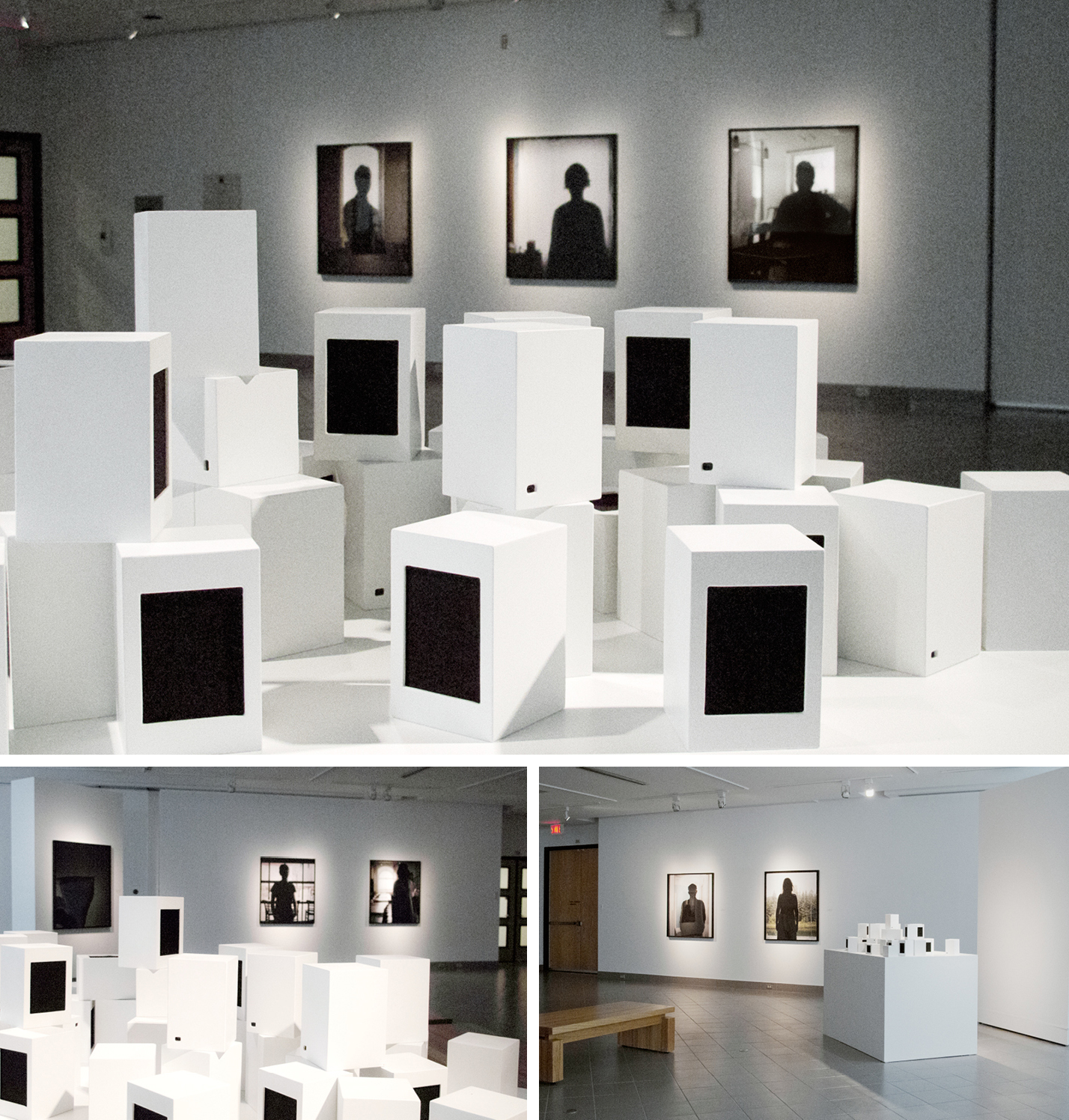Entre Autres
Les Ombres /// Les Parleurs

Galerie Les territoires. Montréal, 2010.
This project is composed of two parts. One part consists of a series of large colour photographs (Les Ombres), the other is a sound sculpture comprising dozens of small boxes displayed on a plinth, each little box emitting the sound of a person’s story (Les Parleurs). This project portrays people I met after placing an ad in the classifieds, and pays particular attention to individuals’ oral as well as visual presence. Shadowy characters, given the form of barely identifiable silhouettes, arouse the visitor’s narrative imagination.
Les Ombres and Les Parleurs are distinct projects yet they complement each other formally and thematically in important ways. At base, they are an attempt to grasp a substance by drawing attention to the shape that contains it. These shapes—visual, tactile, aural—offer ways of grasping the difference of others. With their presence, visitors help to bridge the gap between the installation and the surrounding images; with their imagination, they help to pull together the snippets of lives that are presented.
The portraits that make up the series Les Ombres are backlit and under-exposed. The silhouettes suggest sites of projection: the people photographed become, in a way (and never completely) the bearers of a multiplicity of possible identities. Visitors may attribute to these subjects the identities they wish; they may also, by using the reflective glass that covers the image, attempt to complete the picture with their own reflection. The title plays on a double meaning: Les Ombres (meaning “the shadows”) suggests the absence of light, but it also suggests the opposite: light’s appearance or revelation through the interposition of another body.
Les Parleurs (meaning “the speakers”) contains stories and interviews that were collected during these photographic encounters. People’s responses are varied. Individual accents, rhythms of speech, and vocal expressions create a kind of non-visual portrait of the speakers. The boxes’ informal placement on the plinth is meant to encourage visitors’ active participation (one can pick up a box and handle it freely), while also suggesting a gathering of voices. From a distance, these voices seem to speak in the incomprehensible murmur of the crowd or a collectivity; from up close, listening first to one box and then another, you step into conversations haphazardly, much like you would in a restaurant or on the street. One by one, each voice becomes the portrait of a singular individual, of a person who is fully real. The activity of handling and listening to these objects may tempt visitors to draw nearer to the characters by conjuring up their own personal anecdotes and experiences.








